Day 3 of a four day Autumn Migration tour. It was another cloudy, grey and dull day, but the winds were lighter today and it stayed dry. Much better conditions to be out birding on the coast again.
We started the day at Sheringham Cemetery. As we arrived, we met two other local birders just leaving who told us that one of the Ring Ouzels which had been seen here yesterday had been present earlier but had since flown off. There had been a Yellow-browed Warbler here yesterday too, so we decided to go and have a look for that first, then check the bushes where the Ring Ouzels had been feeding in case any had come back.
As we walked round towards the far corner, a Green Woodpecker flew up from the short grass and landed round the back of a pine tree over by the fence. We could just see its head looking round the side of the trunk from time to time. Then it dropped down into the grass nearby and started feeding again, where we could get a better look at it through the scope.
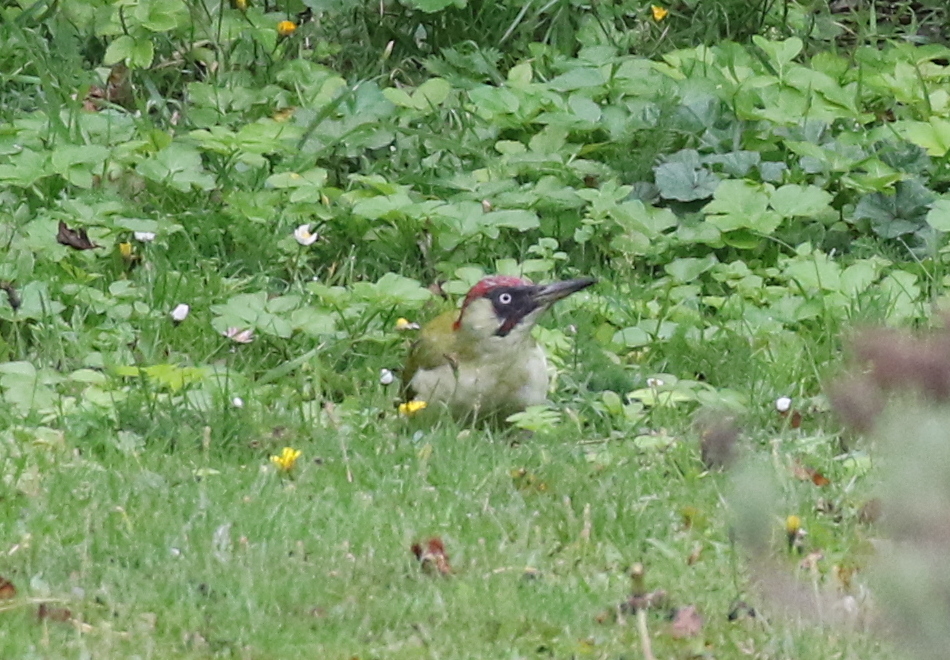
There was no sign initially of the Yellow-browed Warbler in the corner where it had been yesterday but while we were looking for it, we noticed a tit flock coming across the cemetery. We decided to follow that across to the allotments to see if it was with them. There were lots of Long-tailed Tits, Blue Tits, Great Tits, Coal Tits and a couple of Goldcrests, but no sign of the Yellow-browed Warbler.
Having left the bushes in peace for a while, we walked over to see if anything had come back. There were lots of Blackbirds now – we counted eight which flew out and there were still two or three in the hawthorns, plus a couple of Song Thrushes, but still no further sign of any Ring Ouzels.
While we were checking out the bushes, one of the group was looking over behind us and spotted a warbler in the trees in the corner. The Yellow-browed Warbler was back! We hurried over and found it flitting in and out of a large oak. It was also very vocal now, calling regularly, a distinctive sharp ‘tsooeet’. Almost all of the group eventually got a good look at it when it came out on the front of the tree a couple of times, although it was hard to get onto at times in the leaves. We could see its creamy yellow supercilium and double wing bars.
We were a bit later than hoped now, but we headed down to the prom anyway. The tide was quite well out already and there was no sign of any Purple Sandpipers on the sea defences, but there were lots of Turnstones feeding on some food put out on the prom or loafing around on the rocks.
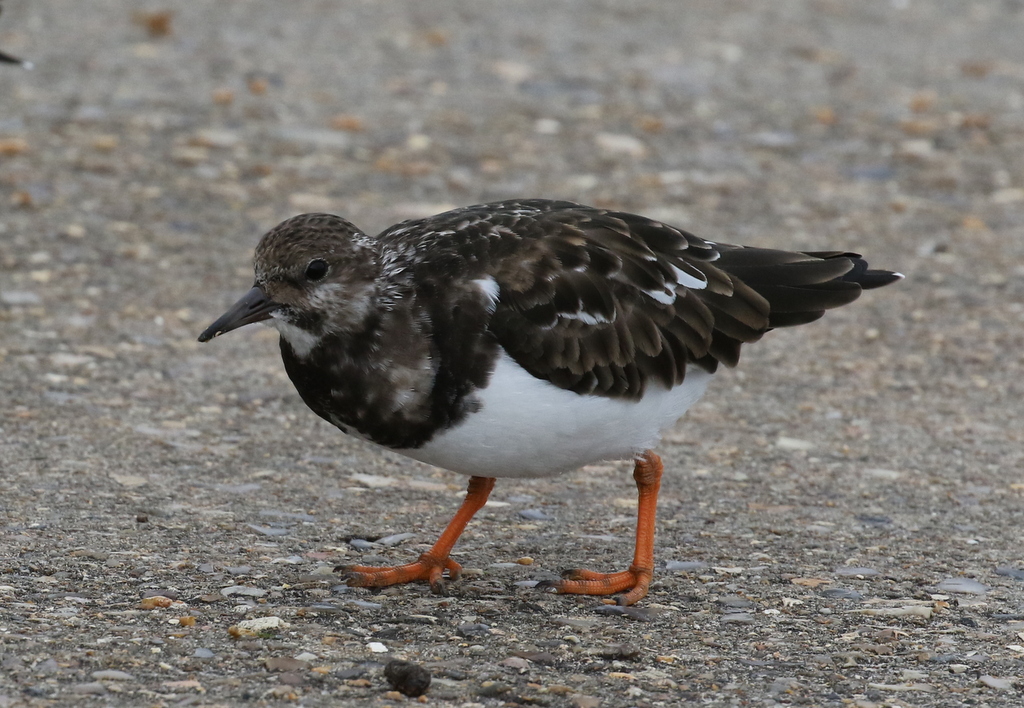
We had thought, with the improvement in weather conditions, that there might be some birds moving today, so we wanted to have a look out to sea. We did find a couple of small groups of Razorbills and a lone Guillemot on the sea. A handful of Gannets flew through west, and a single Red-throated Diver flew east. But there was no sign of anything else moving today, no ducks, waders or small birds coming in.
Heading back west, we stopped again at Walsey Hills. The warden there quickly pointed us to the Jack Snipe which was asleep on an island of mud against the reeds at the back of Snipe’s Marsh. It was well camouflaged amongst the stumps of cut reed, bu we could see its golden yellow mantle and crown stripes. From time to time it would give a quick burst of it’s distinctive bouncing action and once or twice it woke up and flashed its bill, shorter than a Common Snipe.

After watching the Jack Snipe for a bit, we headed in along the footpath through the trees. There were lots of tits around the feeders and we heard several Chiffchaffs as we made our way through to the willows at the back. There had been a Siberian Chiffchaff in here for the last couple of days, but we couldn’t find it. We saw one rather pale Chiffchaff, but it was rather too green in the upperparts to fully fit the bill and seemed to be calling like a regular Chiffchaff to boot.
We did see another Yellow-browed Warbler which called a couple of times before eventually flicking up higher into one of the trees where we could see it. There was a Blackcap in here too.
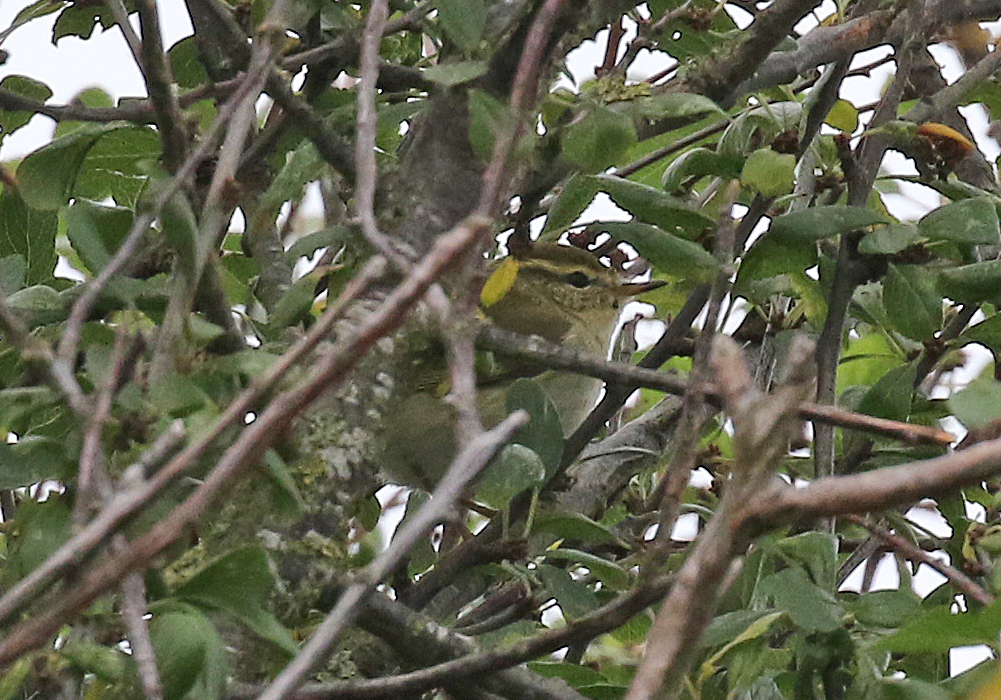
We went round to Cley for lunch and the weather was nice enough now to make use of the picnic tables outside. A small flock of Ruff came up off the scrapes and flew off inland. A Marsh Harrier circled over the reserve, flushing everything. A Yellowhammer flew over high west calling, presumably a migrant. And a small flock of Pink-footed Geese flew over – our first of the day today.
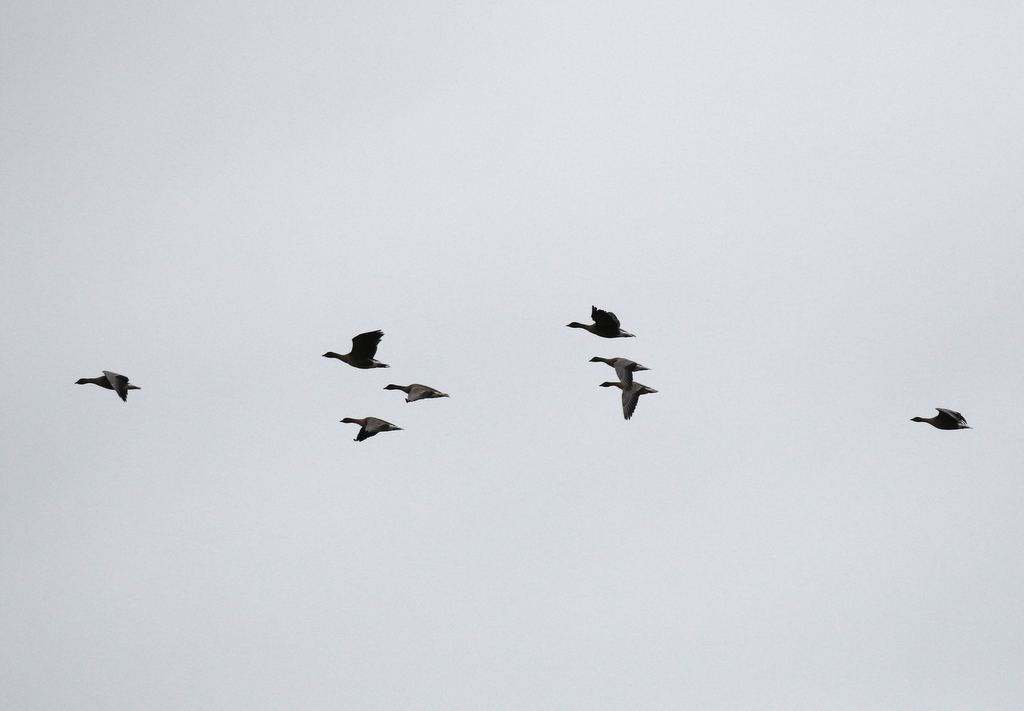
There had been a Hooded Merganser found at Titchwell earlier this morning, and we learnt that it was still present this afternoon, so we decided to head over there to try to see it. As we made our way west along the coast road past Holkham, a small line of five Jays flew high over the fields beside the road, more birds on the move.
The car park at Titchwell was already very full, with lots of people interested to see the Hooded Merganser. We managed to find somewhere to park and headed straight round to Patsy’s Reedbed. The Hooded Merganser was asleep at first over by the reeds at the back but then woke up and swam round a couple of times so we could get a good look at it.

Hooded Merganser is a rare visitor from North America, with only 12 accepted records, although no occurrences before 2000 were accepted. The situation is complicated by the fact that Hooded Merganser is very common in captivity and escapes are frequent. The Titchwell bird showed no signs of having been in captivity – we couldn’t see any rings on its legs and it was fully winged. In fact when shooting started in the distance, from the fields across the main road, all the ducks took off and the Hooded Merganser flew round strongly before eventually dropping back down towards the reedbed pool.
Interestingly, a male Hooded Merganser had been photographed flying past Titchwell back on 18th September. What was thought possibly to be the same bird the turned up in Worcestershire the following day. Was this the same bird back again or had it not gone to Worcestershire after all? Where had it been in the interim?
The Pintail was also on the pool here again, at least until the shooting started. A female Stonechat perched up on the top of the hedge behind us. A male Marsh Harrier circled up over the reedbed and drifted over towards us.
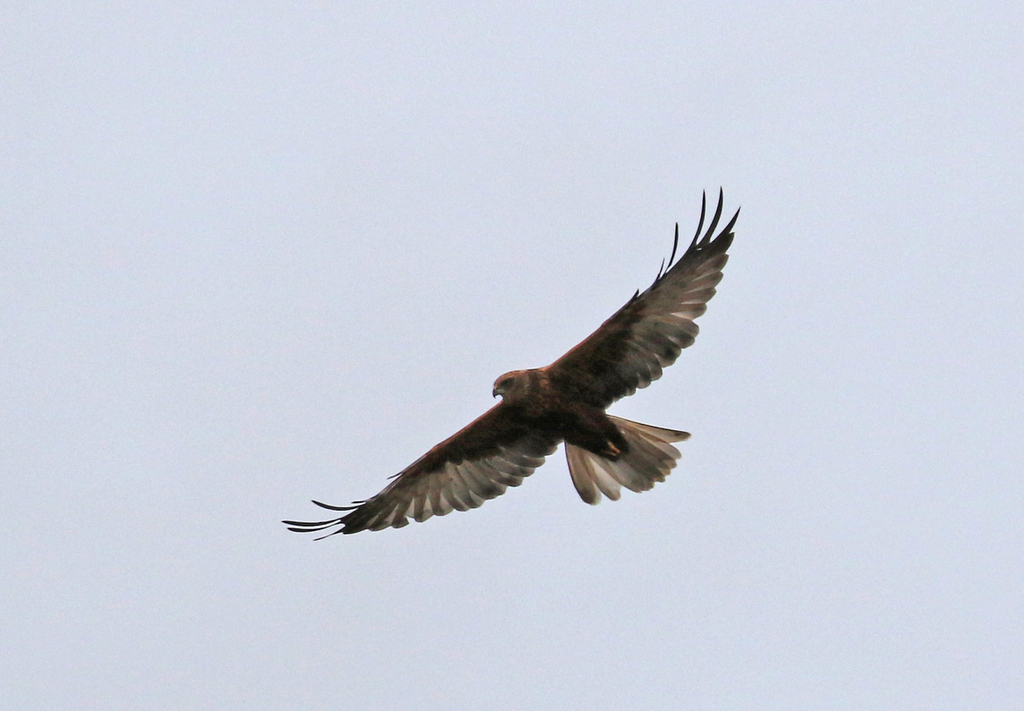
The Autumn Trail is still open, so we walked round to the far corner of the Freshmarsh. We were hoping to find Water Rail and Bearded Tits and although we heard the former squealing and the latter pinging from the reeds, neither showed themselves for the group.
We got the scope on some Bar-tailed Godwits and then some Black-tailed Godwits and one of the latter helpfully walked into the middle of a group of the former to give us a good side-by-side comparison. There were plenty of Avocets and the regular selection of ducks too.
Walking back round along Meadow Trail, we heard a Marsh Harrier calling and looked up to see a young male displaying high in the sky overhead. Not a common sight at this time of year, and the tumbling was a little bit half-hearted. Out on the main West Bank, the Water Shrew was feeding on the side of the path again.
A small crowd had gathered by the reedbed pool, where the Hooded Merganser was now asleep out in the middle of the water. We continued on towards Island Hide, where a Water Rail was showing well on the edge of the reeds. We had a great view of it in the scope.
Some Bearded Tits had been showing along the edge of the reeds too, but had now apparently disappeared round the corner. We were told that some Bearded Tits had also been showing well earlier in the reeds by the main path just beyond the hide and thankfully they were still there. We had fantastic views of a pair, which kept working their way up into the tops of the reeds before flying a short distance further along, the male Bearded Tit with powder blue/grey head and black moustache.
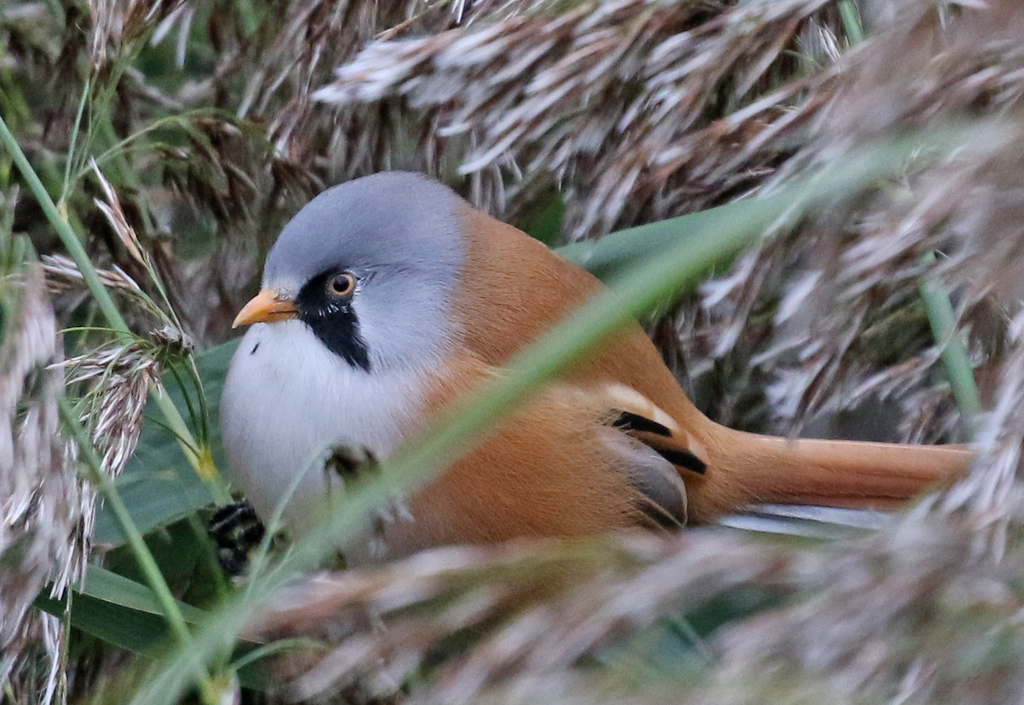
Interestingly, the pair of Bearded Tits appeared to be followed by a Cetti’s Warbler. After the Bearded Tits flew a short way further down, then the Cetti’s Warbler would flick up out of the reeds too and land again a little further along. It did this several times – not something we have ever seen before. It is normally hard enough just to see a Cetti’s Warbler!
It was a great way to end the day, watching the Bearded Tits. As we walked back towards the Visitor Centre, a flock of about thirty Siskins buzzed around the trees above the path. A small taster of what we were to see tomorrow!
















